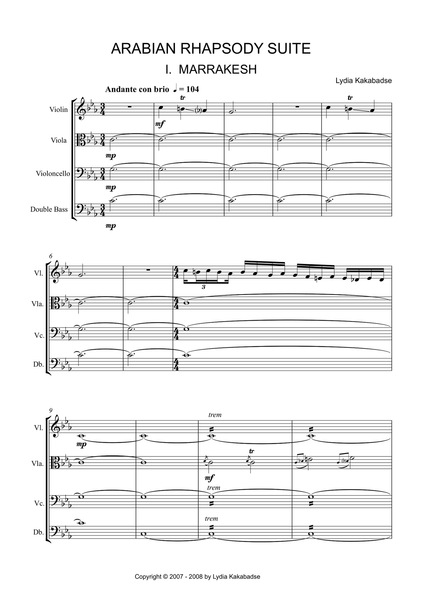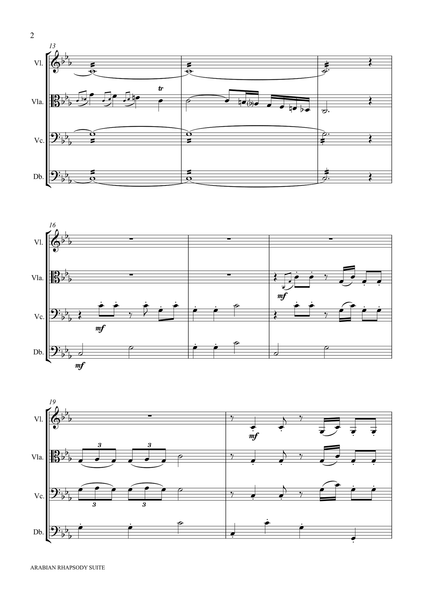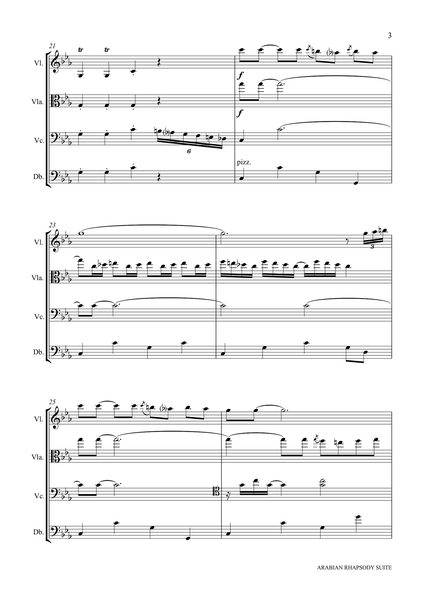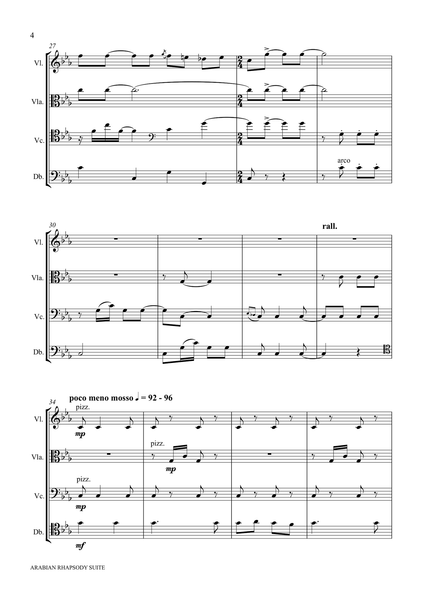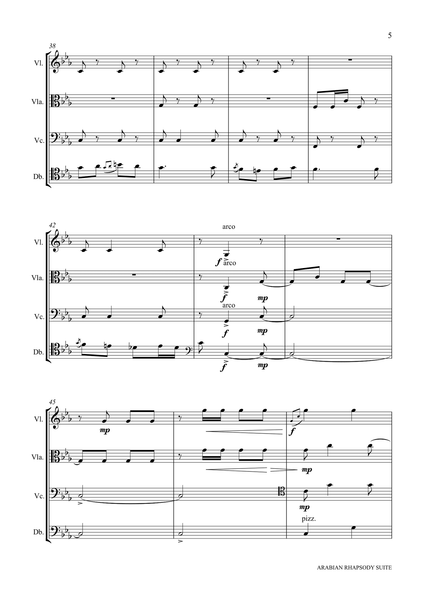Lydia Kakabadse: Arabian Rhapsody Suite – for “alternative” string quartet (NXP075)
This is a sheet music edition of Arabian Rhapsody Suite by the composer Lydia Kakabadse.
Sheet music for “alternative” string quartet (violin, viola, cello, double bass)
Duration: 10 minutes
Score: 31 pages
Parts: 24 pages
Audio Samples
Preface and programme notes
Arabian Rhapsody Suite is written in free fantasy form (i.e. a rhapsody) and in a style suggestive of Arab music. Scored for violin, viola, cello and double bass, the work is characterised by an emphasis on melody and rhythm, rather than harmony. The 1st movement, written in late 2007 as a stand-alone piece (entitled Arabian Rhapsody), was premiered at St John’s Smith Square, London in March 2008. Two more movements were added to form a suite and the complete work was premiered at Norwich Cathedral in March 2009. The work has been recorded on the Naxos label and is included in my chamber album The Phantom Listeners.
1st movement – Marrakesh
Much use is made of embellished melodies, syncopated rhythms and ornamented passages over an open 5th accompaniment, all of which seek to capture the thrilling vibrancy and mystique of Marrakesh. There is frequent interplay between the instruments and each is given an opportunity to exhibit its technical ability as a soloist. Despite the open 5ths, much ornamentation, frequent accidentals and parallel 5th progressions, the sense of tonality is not lost and the tonal centre of C minor permeates through.
2nd movement – Reverie
As its name suggests, this movement is dreamlike in character. Played sempre tranquillo it is characterized by the flow of dainty runs in the form of rising and falling triplets followed by the rapid alternation of notes an augmented 2nd apart. The viola announces the main theme, which is later taken up by the violin and then the cello. The double bass plays in its higher register against an open 5th accompaniment, producing an ethereal sound.
3rd movement – Sultan’s Feast
Rich and heavy in equal measure and played con gusto, this movement features accented offbeats and an abundance of melody. The violin, viola and cello make a dramatic entrance playing a syncopated rhythm in unison in their lower register, whilst the double bass maintains the first beat of the bar. The melodic material is then taken up in turn by each of the 3 upper strings. With its fast, arpeggio like pizzicato accompaniment, the double bass simulates the pulsating throb of the tabla, bringing the movement to a piano close.
Lydia Kakabadse







